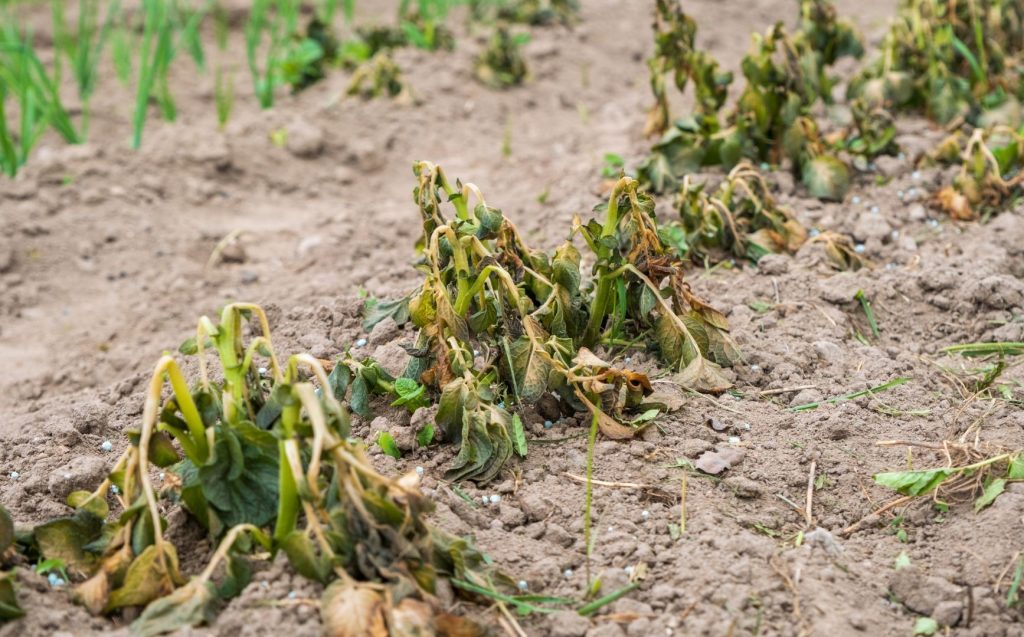The Impact of Climate Change on the Potato Industry and Possible Solutions
As global climate patterns shift, potato cultivation is facing significant challenges that are reshaping the agricultural landscape. These changes impact not only the yield and quality of potato crops but also the geographical distribution of potato farming.
Climate Change: A Looming Threat to Potato Production
Changing Climate Patterns
Climate change presents a significant and growing challenge to potato cultivation. Unpredictable weather patterns, including extreme temperatures, droughts, floods, and unseasonal rains, disrupt traditional farming practices and threaten crop yields.
Potatoes, traditionally grown in temperate climates, are sensitive to changes in temperature and precipitation. As global temperatures rise, many regions are experiencing altered growing seasons, with warmer temperatures affecting the growth cycle of potatoes. Heat stress can lead to reduced tuber size and quality, impacting both yield and the nutritional value of the potatoes.
In some areas, increased temperatures have extended the growing season, which could potentially lead to higher yields. However, other climatic challenges often offset this benefit, such as irregular rainfall patterns. Excessive rain can lead to waterlogging, which affects root development and makes the plants more susceptible to diseases. Conversely, drought conditions stress the plants, reducing yield and affecting the quality of the tubers.
- Impact on Yields and Quality: Studies reveal potential 18-32% yield reductions by 2069 due to climate change. Extreme weather events like droughts and heatwaves negatively affect tuber development, leading to smaller sizes and lower quality.
- Regional Disparities: While Northern European regions may benefit from extended growing seasons, Southern Europe and other areas face increased water scarcity, requiring a shift towards drought-resistant varieties and efficient irrigation techniques.

Potato plants damaged by frost
- Shift in Pest and Disease Patterns – How climate change empowers pests and pathogens, putting potato crop under pressure.
Climate change also influences the prevalence and distribution of pests and diseases that affect potato crops. Warmer temperatures can lead to increased populations of pests like the Colorado potato beetle, which is notorious for its ability to decimate potato fields. Similarly, changes in humidity and rainfall patterns affect the prevalence of fungal and bacterial diseases, such as late blight, which thrives in wetter conditions.
Farmers are adapting to these challenges through various strategies. These include planting drought-resistant or heat-tolerant potato varieties, adjusting planting and harvesting times, and employing more efficient irrigation techniques. Integrated pest management practices are also being refined to tackle the changing patterns of pests and diseases.
Adaptation Strategies
The industry is actively pursuing adaptation measures such as:
- Developing resilient varieties: Breeding programs focus on traits like heat and drought tolerance, pest and disease resistance, and improved water-use efficiency. Examples include the efforts of the Canadian-led team creating a “super-pangenome” of the potato to identify beneficial genetic variations.
- Water management solutions: Implementing precision irrigation systems, utilizing drought-tolerant varieties, and exploring alternative water sources to optimize water usage and mitigate water scarcity.
- Knowledge sharing and collaboration: Bridging the gap between research institutions, breeders, and farmers to facilitate the adoption of climate-smart agricultural practices and enhance resilience.
- Soil Health and Sustainable Practices for Potato Cultivation: The health of the soil is paramount in potato cultivation, and environmental changes are prompting a shift towards more sustainable farming practices. Soil erosion and depletion of nutrients are growing concerns, particularly in regions where intensive agriculture has been practiced. Sustainable practices such as crop rotation, organic farming, and the use of green manure are being adopted to maintain soil health and fertility, ensuring the long-term sustainability of potato farming.
Adaptation and Innovation in the Potato Industry
To address these environmental challenges, researchers and companies in the sector are growing in focus on agricultural research and innovation. Developing new potato varieties that can withstand environmental stresses, improved farming techniques, and better forecasting and management tools are crucial. These innovations improve efficiency, productivity, and sustainability while aligning with evolving consumer demands.
Conclusion
The journey of the potato is also marked by challenges, particularly in the face of environmental changes and the threats posed by pests and diseases. Climate change, with its altering patterns of temperature and precipitation, poses a significant threat to potato cultivation. These challenges necessitate innovative approaches and sustainable practices to ensure the continued success of this vital crop.
Looking to the future, the story of the potato is far from complete. It continues to be a crucial component of global food security and a key crop in the fight against hunger and poverty. As we move forward, the lessons learned from the history of the potato, its cultural adaptations, and the challenges it faces, will be instrumental in shaping a sustainable and resilient agricultural future.
In conclusion, the potato is more than a tuber; it is a testament to human ingenuity and perseverance. Its story reflects our own – a story of adaptation, innovation, and resilience in the face of challenges. As we continue to navigate the complexities of global agriculture and food security, the humble potato stands as a beacon of hope and a reminder of what can be achieved when we work in harmony with nature and each other.
References
1. Global Potato Yields Increase Under Climate Change With Adaptation and CO2 Fertilisation:
https://www.frontiersin.org/articles/10.3389/fsufs.2021.631150/full
2. Improving Potato Stress Tolerance and Tuber Yield Under a Climate Change Scenario – A Current Overview:
https://www.frontiersin.org/articles/10.3389/fpls.2019.00563/full
3. Assessing Future Climate Change Impacts on Potato Yields:
https://www.mdpi.com/2304-8158/12/6/1176
4. The Potato of the Future: Opportunities and Challenges in Sustainable Agri-Food Systems: https://link.springer.com/article/10.1007/s11540-021-09501-4
5. Potential Impact of Changing Climate on the Sustainability of Potato (Solanum Tuberosum L.) Production in India:
https://link.springer.com/article/10.1007/s10705-011-9437-x
Further reading
Hybrid Potatoes – A Climate-Smart Solution for Potato Farmers
Potato Harvest Yield & Storage










































































